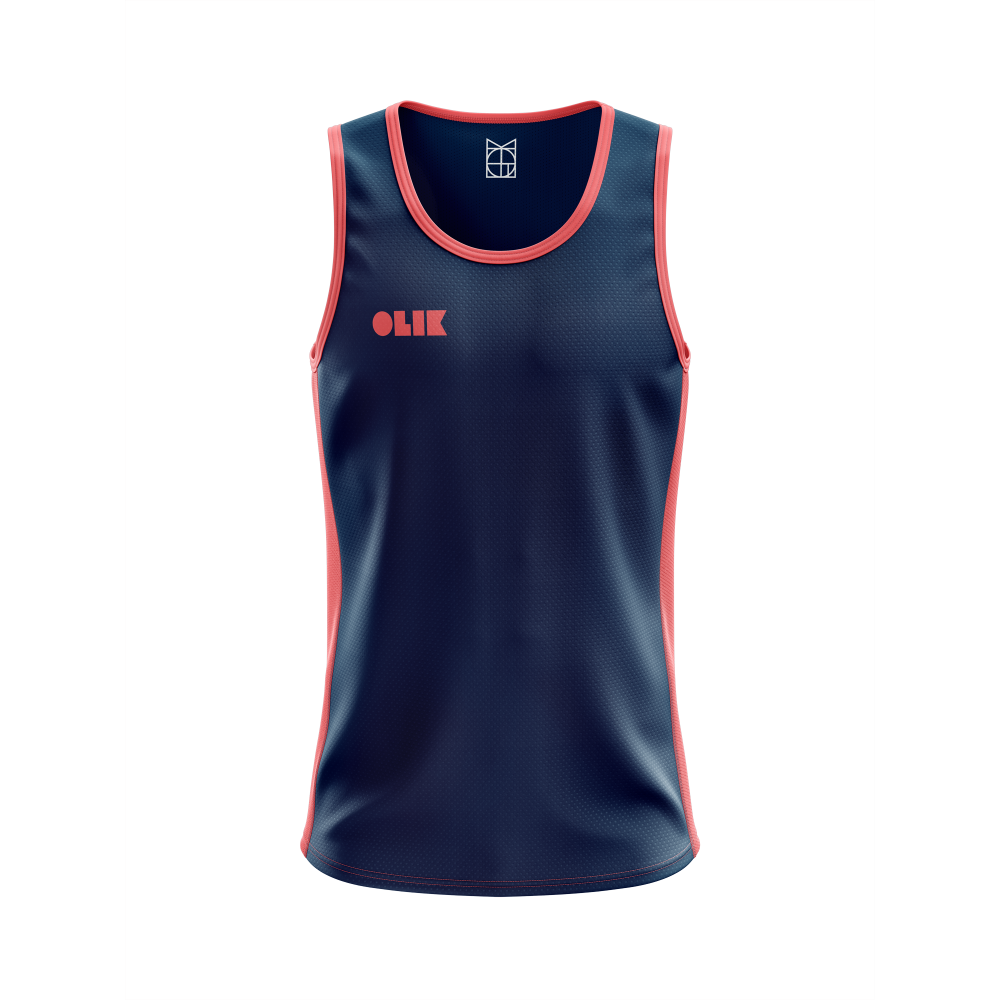How to Start a Running Club [12 Top Tips]
Running clubs are a fantastic way to join a like-minded community, stay fit, and share your love for running. So, why not learn how to start a running club?
Where do you start? How do you go from a group of friends running together to a fully-fledged club?
You're about to find out.
We'll walk you through starting a running club, from defining your vision to recruiting members and organising events. Whether you're a seasoned runner or a newbie, this guide will provide the necessary tools and tips.
So, put on your running gear, lace up your shoes, grab a water bottle, and begin this exciting journey of starting your very own club.

1 - Lace Up: Defining Your Running Club's Vision
Before you hit the ground running, defining your club's vision is crucial. What's the purpose of your club? Is it to train for marathons, promote fitness, or socialise with other running fanatics?
Your vision will guide your club's activities and help attract like-minded members. It's the heart and soul of your club, so take some time to think it through. Remember, a well-defined vision can inspire and motivate your members to lace up their running shoes and hit the pavement.
2 - Picking a Name That Will Last The Distance
Choosing a name for your running club is a fun and creative process. It should reflect your club's vision and personality. A catchy, memorable name can help your club stand out and attract members.
Consider names that are easy to pronounce and spell, and include the location of your running club to help people find you more easily on social media groups and search engines.
Don't forget to check that no one else is already using the name you want to use, or you'll need to rename and start all over again.
Top Tip: Ask ChatGPT to come up with 30 names for your new running club (including your location), and you'll have a bunch of options in seconds.
Once you've picked a name, it's time to start building your brand.

3 - Structuring Your Club for Success
The structure of your running club is vital to its smooth operation. You'll need to decide on leadership roles and responsibilities, including positions like president, secretary, treasurer, and potential volunteers.
Your club might also need a membership coordinator, a social media manager, or a race director. It all depends on the size and scope of your club.
Here are some roles you might consider:
- President: Oversees club operations and makes final decisions.
- Vice President: Assists the president and steps in when needed.
- Secretary: Keeps records, takes meeting minutes, and handles correspondence.
- Treasurer: Manages club finances, including membership fees and expenses.
- Membership Coordinator: Manages member recruitment and retention.
- Social Media Manager: Handles the club's online presence.
- Race Director: Organises club races and participates in event planning.
Top Tip: You might not need a separate person for each role, especially when your club is in its infancy. If members have the time and patience to take on more than one role, it'll significantly cut down the time you spend convincing people to do the job.
4 - Finding Your Crew: Membership Models & Subs
Now that you've got a name, a vision, and clearly defined roles, it's time to find your crew. This means deciding on a membership model and setting membership fees.
You can consider different membership models. Some clubs charge a flat fee, while others have no membership fees at all and survive on donations or local grants.
- Flat fee: One price for all members.
- Tiered memberships: Different levels of membership with different benefits.
- Family memberships: Discounted rates for families.
- Student/Senior discounts: Reduced fees for students or seniors.
- Setting membership fees can be tricky. You want to cover your costs, but you also want to be affordable. It's good to look at what other running clubs are charging. And remember, your fees can always be adjusted as your club grows and evolves.
Finding the right crew for your running club is crucial. They'll be the heart and soul of your club. So take the time to get this step right.
Top Tip: Unless you're treating your running club as a business, you don't need to charge ridiculous sums right off the bat. A couple of quid per runner each month will soon add up to cover your operating costs.

5 - Setting the Pace: Choosing Locations and Schedules
Choosing the right location for your running club is key. You want a place that's safe, accessible, and has good running routes. It could be a local park, a school track, or even a quiet neighbourhood street. Just make sure it's a place where your members will feel comfortable running.
Next, you'll need to set a schedule. This will depend on your members' availability. Some clubs meet early in the morning, others in the evening. Some clubs run every day, others only on weekends. Finding a schedule that works for most of your members is essential.
Top Tip: Your running club's location and schedule can make or break its success. So take the time to get these details right. Your members will thank you for it.
6 - Building the Buzz: Recruitment and Retention Strategies
Once you've set up your club, it's time to start recruiting members. There are many ways to do this. You could post flyers in local gyms and sports stores or on social media (the most cost-effective and time-effective method).
- Offer a free trial period for new members
- Organise fun events like races or social gatherings
- Partner with local businesses for discounts or perks
- Highlight the benefits of joining your club, like improved fitness, social interaction, and support
But remember, it's not just about getting people to join. You also need to keep them coming back. This means creating a welcoming and inclusive environment, providing value to your members, and always looking for ways to improve the club experience. After all, a happy member is a loyal member.
Top Tip: Creating club pin badges and rewards is not only a cost-effective way of building a sense of belonging and keeping your runners coming back, but it's also really easy if you find the right custom merch company.

7 - Branding Your Running Club
Creating a solid brand for your running club is crucial. It's more than just a logo or a catchy name. It's about your club's identity, what it stands for, and how others perceive it.
Start by designing a logo and colour scheme that represents your club's mission and values. This logo will be used on your website, social media, and promotional materials. It should be simple, memorable, and visually appealing.
You can raise vital club funds by selling club-branded running vests, shorts, windbreakers, tracksuit bottoms and other custom running gear. This will not only help with the costs associated with your running club but also give your members a sense of belonging.
Top Tip: We offer a free design service with every order to help you create the perfect kit for your club featuring your logo and club colours.
Want On Brand Running Apparel?

8 - Online Presence: Websites and Social Media
Having an online presence is a must for any running club. It's how you'll reach potential members, keep current members informed, and promote your club's activities.
Start by setting up a website or Facebook page that will be the hub for all information about your club. It should include your mission, membership, schedule, location, and contact information. Also, consider adding a blog section to share news, tips, and member stories.
Website & Facebook page essentials:
- Club mission and vision
- Membership details
- Schedule of activities
- Contact information
- Blog or news section
Platforms like Facebook, Instagram, and Twitter are great for engaging with your members and the wider running community. Post regularly, respond to comments, and use these platforms to build a sense of community around your club.
9 - Funding Your Club: Budgets, Sponsorships, and Fundraising
Running a club isn't free. There are costs for permits, equipment, website hosting, and more. So, you'll need to plan your budget carefully. Start by listing all potential expenses and income sources. Then, decide on a membership fee that will help cover costs without being too high for potential members.
Potential expenses:
- Permits for running in public parks
- Equipment like cones and water bottles
- Website hosting and domain name
- Promotional materials
- Insurance
Sponsorships can also be a great way to fund your club. Reach out to local businesses interested in supporting a community sports club. In return, you can offer to display their logo on your website and running gear.
Finally, consider organising fundraising events. These could be charity runs, bake sales or even a crowdfunding campaign. Not only will these events raise money, but they'll also help to build community and promote your club.

10 - Engaging the Community and Promoting Events
Engaging with your local community is key to your running club's success. It's not just about attracting new members; it's also about building relationships and creating a positive image for your club. Participate in local events, volunteer for community projects, and collaborate with other sports clubs to raise your club's profile and attract more members.
Promoting your club's events is also crucial. Use your website, social media, and local media outlets to spread the word. Remember, the more people know about your events, the more successful they will be.
11 - Keeping the Pace: Member Engagement and Club Culture
Keeping your members engaged is crucial for the success of your running club. It's not just about organising runs. It's also about creating a supportive and inclusive club culture.
Encourage members to participate in decision-making, offer volunteer opportunities, and celebrate their achievements to make them feel valued and foster a sense of ownership.
- Encourage member involvement in club administration and decision-making.
- Offer volunteer opportunities for members to contribute to the club.
- Celebrate member achievements and milestones.
Remember, a running club is more than just a group of people who run together. It's a community. Foster a sense of camaraderie among members through social events and group activities to build strong relationships and create a positive club culture.
Finally, always keep the club's mission and goals at the forefront of all activities to ensure that your club stays focused and continues to provide value to its members.

12 - The Finish Line: Evaluating and Growing Your Club
Starting a running club is just the beginning.
To ensure its long-term success, you need to evaluate the club's performance regularly. Use data and analytics to track the club's growth and reach. Gather feedback from members to improve the club experience.
Stay adaptable and open to new ideas to keep the club dynamic and engaging.
Remember, a running club is not static. It should grow and evolve with its members. Keep the sign-up process simple and user-friendly. Offer a trial period for potential new members. Use creative marketing strategies to stand out from other local clubs. Always strive to provide more value to your members and the community.
Contact us today if we can help you get your running club off the ground by creating the bespoke sports gear you'll need to start building your community.



